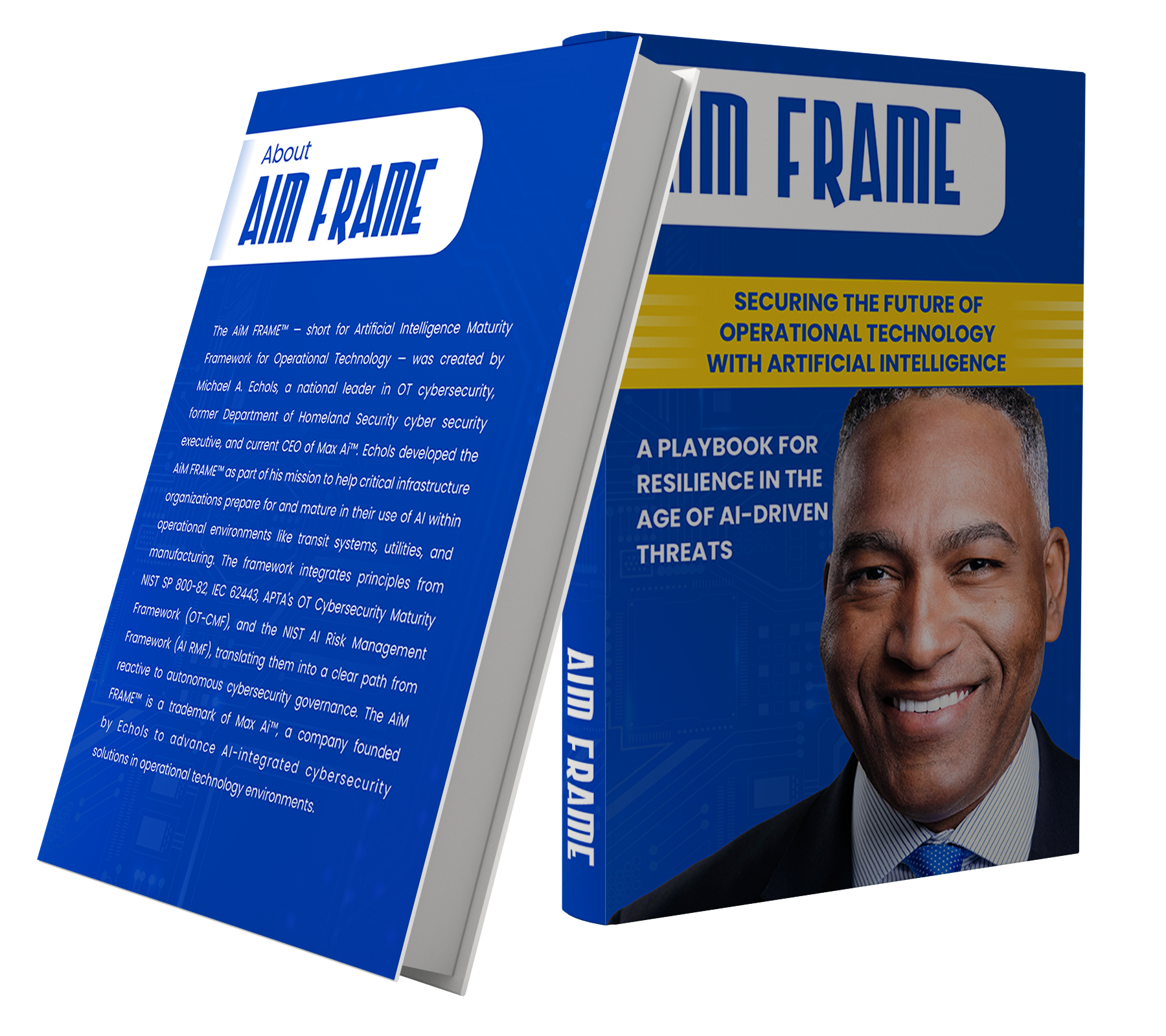The AiM FRAME™
The AiM FRAME™ Maturity Levels
The AiM FRAME™ Maturity Levels
The AiM FRAME™ is structured around five distinct levels of maturity. Each level reflects a step in an organization’s journey from reactive operations to autonomous resilience. This framework is not just a scale—it’s a strategic map to align culture, governance, and technology.
- Reactive
- Core Characteristics:
OT systems operate in isolation or silos with little to no cybersecurity integration. Responses to threats are manual and event-driven. AI is not present or is viewed as a future consideration. - Key Capabilities:
Minimal monitoring. No AI planning. Reactive incident response. Inconsistent data collection. - Governance Expectations:
Ad hoc decision-making. No formal AI policies or OT/IT coordination. - Assurance Strategies:
Basic risk acknowledgment. No measurable confidence in system behavior or outcomes. - Example:
A facility responding to cyber incidents only after service outages—without understanding root causes.
- Informed
- Core Characteristics:
Awareness of the value of AI and data in OT systems begins to grow. The organization starts tracking cyber incidents and analyzing vulnerabilities. - Key Capabilities:
Foundational inventory of OT assets. Data pipelines begin forming. Pilot monitoring systems may be introduced. - Governance Expectations:
Cyber roles and responsibilities are defined. AI use is considered in risk discussions. - Assurance Strategies:
Documentation of known risks. Baseline metrics begin to form. - Example:
A water utility logs SCADA anomalies and evaluates AI vendors for future predictive tools.
- Integrated
- Core Characteristics:
Cybersecurity is integrated into operations. AI-enabled tools are deployed for anomaly detection, performance analysis, or planning. OT and IT coordination improves. - Key Capabilities:
Data is centralized for analysis. AI models assist human operators. Incident response is guided by insights. - Governance Expectations:
Policies for AI procurement, monitoring, and auditing are in place. Cross-functional governance bodies exist. - Assurance Strategies:
Internal audits of AI-driven systems. Change control processes include AI oversight. - Example:
A rail transit agency uses AI to detect early signs of equipment failure and coordinates actions across engineering and cybersecurity.
- Predictive
- Core Characteristics:
The organization anticipates issues using AI-driven models trained on historical and real-time data. It moves from reaction to prevention. - Key Capabilities:
Real-time data fusion. Predictive maintenance. Threat forecasting. - Governance Expectations:
Risk committees review AI performance. Ethical and bias checks are routine. - Assurance Strategies:
AI validation frameworks. Scenario testing. Explainability requirements are enforced. - Example:
An energy provider uses AI to simulate load balancing and predict cyber-physical interactions under stress conditions.
- Autonomous
- Core Characteristics:
AI is trusted to make and implement decisions within defined guardrails. Systems self-heal, reroute, or adjust in real time. - Key Capabilities:
Automated incident response. Autonomous operational optimization. Continuous learning. - Governance Expectations:
Governance-by-design principles. Continuous stakeholder review. Regulatory alignment. - Assurance Strategies:
Continuous validation. Red-team simulations. Real-time assurance dashboards. - Example:
A smart grid that autonomously mitigates supply threats, reconfigures nodes, and sends risk alerts to leadership in real-time.

The AiM FRAME™
The AiM FRAME™ Maturity Levels
The AiM FRAME™ is structured around five distinct levels of maturity. Each level reflects a step in an organization’s journey from reactive operations to autonomous resilience. This framework is not just a scale—it’s a strategic map to align culture, governance, and technology.
- Reactive
- Core Characteristics:
OT systems operate in isolation or silos with little to no cybersecurity integration. Responses to threats are manual and event-driven. AI is not present or is viewed as a future consideration. - Key Capabilities:
Minimal monitoring. No AI planning. Reactive incident response. Inconsistent data collection. - Governance Expectations:
Ad hoc decision-making. No formal AI policies or OT/IT coordination. - Assurance Strategies:
Basic risk acknowledgment. No measurable confidence in system behavior or outcomes. - Example:
A facility responding to cyber incidents only after service outages—without understanding root causes.

